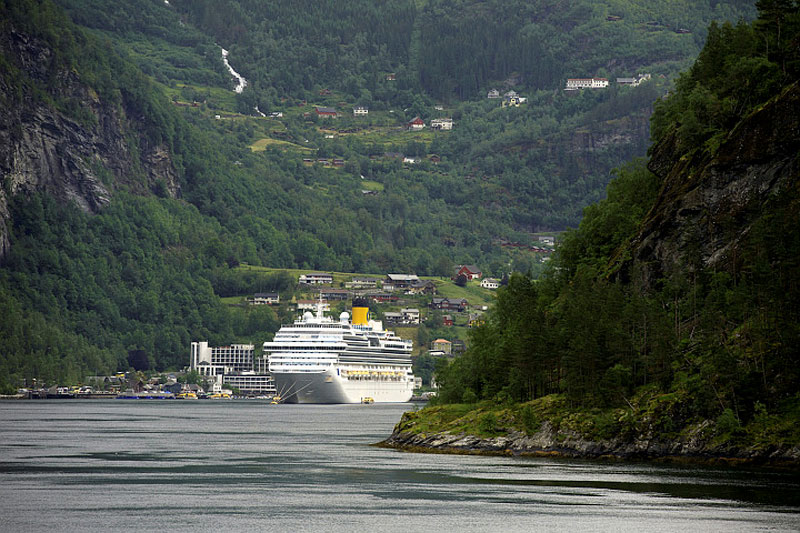The Norwegian Maritime Authority (NMA) has announced that, according to local port directors, they received fewer complaints about exhaust smoke from cruise ships in the fjords this past summer season.
This follows tighter emission regulations that were introduced as of Jan. 1 for vessel traffic in the Nerøyfjord, Aurlandsfjord, Geirangerfjord, Sunnylvsfjord and Tafjord.
The NMA stated that a prior study it had undertaken concluded that stricter measures were necessary to reduce the emissions of NOx and SOx in particular.
As for the new regulations, the NMA quoted Rita Berstad Maraak, port director for Stranda as saying: “We only have one objection: they are not strict enough.”
However, the regulations will be gradually tightened over a five-year period, in order to enable the cruise industry to conform to the increasingly strict requirements, the NMA stated. The first requirement for reduced NOx emissions will enter into force in 2020. A further tightening will come in 2022, while the strictest requirement regarding NOx emissions will be introduced in 2025. This will entail an 80 per cent reduction in NOx emissions, which will require exhaust gas treatment systems or alternative fuels.
Berstad Maraak continued: “It is crucial to avoid letting sound environmental policies become a cause of unreasonable competition. If the regulations are made to apply only to the world heritage fjords, the emissions will simply move elsewhere. We applaud strict measures, but they should apply to everybody.”
Cruise tourism is extremely important for the local communities along the world heritage fjords and perhaps the cornerstone of the local tourist industry, according to the NMA. Jostein Lange Bergset, port director in Flåm, told the NMA publication Navigare that there has been less visible smoke this summer, but also that it was difficult to distinguish legal fumes from those that should not have been emitted in the first place.
“We have reported the examples that we have observed, but fortunately it seems that there has been less really nasty smoke this season,” Bergset noted.
Katrin Blomvik, director of the Geirangerfjord World Heritage Foundation, said: “We are really excited to see the huge interest being taken in the Norwegian management of the world heritage fjords. Today there are 50 protected maritime heritage sites on the World Heritage List, and the West Norwegian Fjord Landscape is one of them.”
“‘We have received fewer complaints from local people and visitors with regard to the pollution generated by the cruise ships this summer. We expect the situation to improve over time, in line with the gradual tightening of the regulations,” added Blomvik.
While there have been a few gloomy predictions for the Norwegian cruise industry as a result of the stricter regulations, Erling Oppheim, director of the Nærøyfjord World Heritage Park, said he has no fears that they will cause Norway and her spectacular fjords to suffer as a tourist destination.
“Quite the opposite,” he said, “shipowners are teaming up with us. Alaska shows that it is fully feasible to impose strict requirements. We have invited the cruise operators to meetings to discuss how they can contribute, and we have engaged in a positive dialogue to promote the environment, climate and sustainable development of these areas.”
Bjørn Pedersen, head of the Department of Legislation and International Relations in the NMA, commented that many vessels will have difficulty complying with the requirements in the more stringent regulations, and that cancellations are likely to come. As a consequence, the world heritage fjords will only be open to vessels that may legally enter them.
“The number of vessels built before 2000 that have previously used the world heritage fjords as ports of call will be further reduced, and we regard this as a direct consequence of the environmental requirements. The good news is that there are new cruise ships that have the best and newest technology and comply with the requirements, and they will start arriving as early as next year,” he said.
“Although we have seen improvements already this year, the major gains will come in the years ahead. We are therefore now considering the possibility of introducing stricter environmental requirements for shipping in Norwegian waters in general, not only in the world heritage fjords,” Pedersen added.




